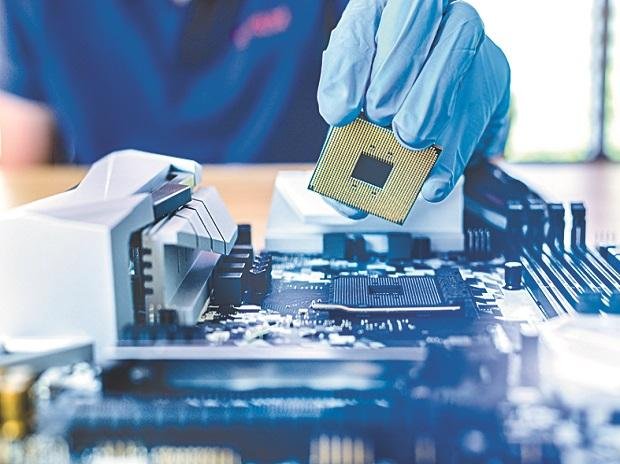This electronics move ahead at the fast pace of India in electronics
To make India powerful enough to establish itself as a high-end product, on Thursday rolled out a ₹76,000-crore plan to spoof miniconductors and Mayu futuring in the country to strengthen Static.
It works in India’s process of working effectively in making it electronic.
Semiconductor plans include such as in science to test pen informants, which are a major component of computers. COVID-19 is essential, it is essentially ready.
The incentive is designed for companies engaged in silicon semiconductor fabs, display fabs, compound semiconductors, silicon photonics, sensor fabs, semiconductor packaging and semiconductor design.
“Today’s landmark decision will lead to the development of a complete semiconductor ecosystem from design, manufacturing, packaging and testing,” Vaishnav said.
He said that with the semiconductor incentive scheme, the government expects to invest around Rs 1.7 lakh crore and create 1.35 lakh jobs in the next four years.
The government is looking at at least two greenfield semiconductor fabs and two display fabs in the country, while at least 15 compound semiconductors and semiconductor packaging are expected to be set up under the scheme with the support of the government.
Under the Design Linked Incentive (DLI) scheme, assistance will be provided to 100 domestic companies of semiconductor design for Integrated Circuits (IC), Chipset, System on Chips (SoC), System and IP Core and Semiconductor Linked Design.
The DLI scheme will offer incentives up to 50 per cent of eligible expenditure on net sales and 6-4 per cent product deployment linked incentives for five years.
An independent ‘India Semiconductor Mission (ISM)’ will be set up to drive long-term strategies to develop a sustainable semiconductor and showcase ecosystem in the country.
The new mission will be led by global experts from the semiconductor and display industry, and act as the nodal agency for efficient and smooth implementation of the plan.
India is looking to grow electronics manufacturing from $75 billion to $300 billion in the coming six years, and semiconductor chips are an important part of that ecosystem.
The plan plans the skilling and training of 85,000 high-quality engineers, and lays out a roadmap for the next 20 years.
The Tata Group has already announced its intention to enter semiconductor manufacturing. Sources told PTI that a firm of the Vedanta Group will re-invest to set up a semiconductor manufacturing plant in India.
According to sources in the Ministry of Electronics and IT, two large electronics chip companies and two display manufacturing units, each with an investment of Rs 30,000-50,000 crore, are expected to be set up within the next four years.
In addition, 20 companies including chip packaging firms, Compound Semiconductors, which manufacture chips for the automotive sector, power tools etc., are expected to be commissioned in three years, with an investment of Rs 3,000 crore to Rs 5,000 crore.
The scheme to set up semiconductor fabs and display fabs in India will provide financial assistance up to 50 per cent of the project cost to eligible applicants.
The Center will work with State Governments on hi-tech clusters with necessary infrastructure in terms of land, semiconductor grade water, power, logistics and research ecosystem for approving applications for setting up at least two greenfield semiconductor fabs and two display fabs. will work together. Country.
Ministry of IT will take steps for modernization and commercialization of Semi-conductor Laboratory (SCL). It will explore the possibility of SCL’s joint venture with a commercial fab partner for modernization of brownfield fab facility.
“Financial assistance of 30 per cent of the capital expenditure will be provided to the units sanctioned under the scheme for setting up of Compound Semiconductors/Silicon Photonics/Sensor Fab and Semiconductor ATMP/OSAT facilities in India,” an official release said.
Industry body ICEA chairman Pankaj Mohindroo termed it a “profound decision” and said the building blocks of the electronic ecosystem – cell, display and semiconductor ecosystem – are critical for long-term sustenance.
“We will not call this a production subsidy, but a very significant investment in our endeavor with ‘Atmanirbharta’,” he said.

